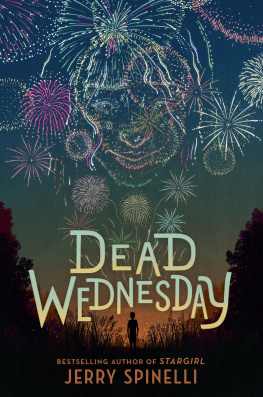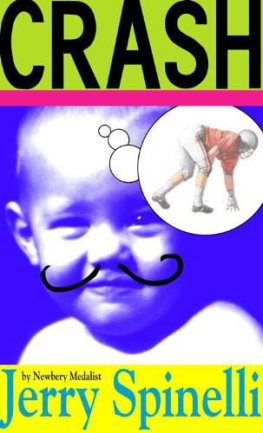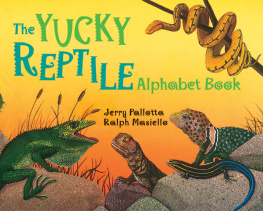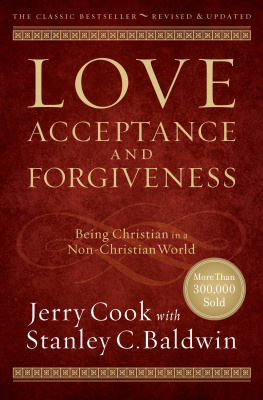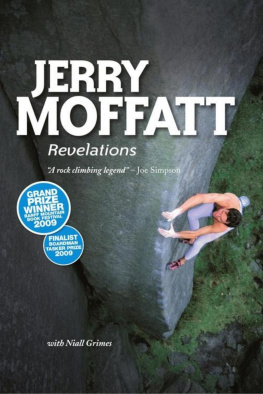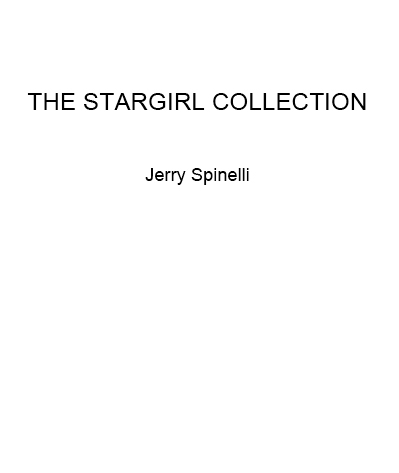This is a work of fiction. Names, characters, places, and incidents either are the product of the authors imagination or are used fictitiously. Any resemblance to actual persons, living or dead, events, or locales is entirely coincidental.
Stargirl
Text copyright 2000 by Jerry Spinelli
Love, Stargirl
Text copyright 2000 by Jerry Spinelli
Cover illustration copyright 2000 by Alfred A. Knopf, a division of Random House, Inc.
All rights reserved. Published in the United States by Alfred A. Knopf, an imprint of Random House Childrens Books, a division of Random House, Inc., New York.
Knopf, Borzoi Books, and the colophon are registered trademarks of Random House, Inc.
Visit us on the web! randomhouse.com/teens
Educators and librarians, for a variety of teaching tools, visit us at RHTeachersLibrarians.com
Ebook ISBN 978-0-449-81037-8
Random House Childrens Books supports the First Amendment and celebrates the right to read.
v3.1_r1
Contents
About the Author
JERRY SPINELLI is the author of many books for young readers, including Hokey Pokey; Stargirl; Love, Stargirl; Milkweed; Crash; Maniac Magee, winner of the Newbery Medal; Wringer, winner of the Newbery Honor; Eggs; Smiles to Go; and Knots in My Yo-Yo String, his autobiography. A graduate of Gettysburg College, he lives in Pennsylvania with his wife, poet and author Eileen Spinelli.
Learn more aboutStargirland the author in an exclusive
INTERVIEW WITH JERRY SPINELLI
Q: What was your inspiration for creating the character Stargirl? Did you draw from people you knew or from your imagination?
A: I drew the aspects of Stargirl from many sources in memory, literature, and hopeful imagination. The one reallife person who embodies more of those aspects than anyone else I know is my wife and fellow author, Eileen.
Q: Do you believe that people like Stargirl really exist or is she a fantasy character?
A: Short answer: Eileen Spinelli exists.
Long answer: Stargirl is as real as hope, as real as possibility, as real as the best in human nature. Outrageous? I hope so. Thank goodness for the outrageous among us. I wish I were more outrageous, less predictable, more unrealistic. I understand that the story carries a whiff of fantasy, of the tall tale. The story and, in particular, the character, are intended to raise dust in the corners of credibility, to challenge our routine ways of seeing ourselves. When Archie says to Leo, She is us more than we are us, he refers to both her essential humanity and to our own often unrealized potential. Leo himself almost accuses her of being too good to be true, then later notes, That was no saint kissing me.
What does it say about us if we believe such a person to be impossible? The message of the story is precisely the opposite: such a person is possible, and to the extent that Stargirl is us (Archie: Shes an earthling if ever there was one), so are we.
Q: If you were to characterize your high school experience, how would you describe it?
A: Learning to be imperfect and happy at the same time, scratching around for what and who I wanted to be.
Q: What books do you like to read? Favorite authors?
A: A variety. Today, for example, I bought three books: Windows XP Simplified, Time Travel in Einsteins Universe, and Meeting of the Waters, a novel. My favorite reading recreation is murder mysteries.
Q: If you could have dinner with anyone in the world, who would you choose, and why?
A: Tie: Loren Eiseley, late anthropologist and poet/essayist, and the late Sonny Liston, former heavyweight champ.
Loren Eiseley because hes often the answer when Im asked, Who is your favorite writer? Its incredible that he wrote so well, considering that he was a scientist. I love his insights and perspectives on humankind and the universe.
On the way home to St. Louis after winning the heavyweight title, Sonny Liston looked forward to a heros welcome, looked forward to receiving affection from the people who had regarded him as a hoodlum and a monster. When he stepped off the plane, not a soul was there to greet him. It broke his heart. Id like to ask him about that day. Id like to dump a teacup of confetti on his head.
Q: When did you realize you wanted to be a writer?
A: Eleventh grade, around the time a poem of mine about a football game was published in the local newspaper. I guess it was largely a matter of timing. I was sixteen. My dream of becoming a Major League baseball player was fading. The imperative to find my course in life was upon me. I was shopping around for who I wanted to be. And here this writing thing seemed to reach down and pluck me out of the crowd. I mean, it wasnt forced, it wasnt planned. Nobody assigned me to write a poem after the game. I was simply moved to do so. I didnt try to get it published. I didnt seek the resulting notoriety. All this pretty much just happened to me. What I did was just apply a little common sense: I like to write, I seem to be pretty good at it, people seem to like what I write (admittedly a lot to conclude from a single poem)ergo, Ill be a writer. Simple!
Q: What do you consider the most rewarding part of writing books for young people?
A: Feedback from readers. The most common kind, of course, is fan mail. Im proud to say that one particularly nice letter was submitted by the reader/writer to a fan mail contest run by the Library of Congress, and it won. It was about Crash. Some of the most heartwarming reports I get are from teachers and librarians who I meet personally at conferences and book signings. When a teacher with tears in her eyes tells how a book saved a student of hers, I know Im in the right business. I remember a letter from a teacher in Georgia. She told me the kids in her class had a choice one day: they could go eat lunch, or they could continue to listen to my book. Every one stayed for the book.
Q: Do you ever use suggestions from readers in new books?
A: I tell readers that if I use an idea of theirs in a book, Ill give them credit in the acknowledgments. This paid off for one student, who gave me the idea for one of the School Daze books: Who Ran My Underwear Up the Flagpole?
Q: How did you start writing Stargirl? What parts of the story came together first?
A: I have notes going all the way back to 1966 for the book that ultimately became Stargirl. At first it was going to be about a boy. It went through many titles, including Moonshadow and Under the Bomb. Many things I read over the years influenced the story, notably the play Ondine by Giraudoux. In its final form the story finds its most specific inspiration in my wife, Eileen, some of whose good deeds and such I happily confiscated.
Q: What advice do you have for young writers?
A: For me, there are many little rules, all superseded by one Golden Rule: Write what you


